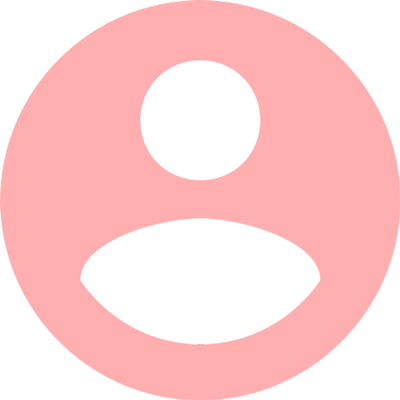The old saying goes, “Those who fail to prepare prepare to fail.” Why spend time and energy cleaning up a mess when you can avoid making one in the first place?
Make sure you understand the assignment. There’s no shame in asking your professor to clarify. Your success depends on understanding what she wants Here are some ways to ask for clarification.
Research and create a basic outline as you go. Roll research and the initial outlining process into one simple step. As you research, create an info dump—a bullet-pointed list of the topics you want to cover. Add links to articles and citations as you go so you can refer to them easily.
Figure out what you want to say. What’s the main argument or idea you’ll express? You need to know before you begin. In order to make a point, you have to have one.
Create a classic, canonical outline. Once you have a clearer vision for your central idea or argument, it’s time to organize your info-dump. Prune out anything irrelevant and organize your outline into the classic structure.
Drafting your essay
By the end of the research and planning process, you’ll feel energized and ready to write about all this interesting stuff your research (or your brainstorming process, if your essay requirement is more personal) has uncovered. Use that energy to write a draft.
Here’s a tip: Don’t spend a lot of time drafting your intro up front. Often, the article itself informs the introduction, and you won’t know what your intro should say until your essay is finished.
The parts of a college essay
Introduction
Your intro tells your reader what to expect from your essay. Think of it as a brief roadmap that begins with an intriguing opening line, includes a quick summary of the topic and ideas you’ll present, and concludes with a thesis statement.
Opening hook
It’s important to draw your reader in from the very first sentence. Take a look at some of these opening lines from college entrance essays submitted to Stanford University.
While traveling through the daily path of life, have you ever stumbled upon a hidden pocket of the universe?
Some fathers might disapprove of their children handling noxious chemicals in the garage.
I change my name each time I place an order at Starbucks.
Summary of your topic, ideas, or argument
Your opening paragraph should introduce the subject matter and the points you intend to make. They should give some background to support the thesis statement you’ll make at the end of the introduction.
The debate over athletes’ use of performance-enhancing substances is getting more complicated as biotechnologies such as gene therapy become a reality. The availability of these new methods of boosting
fThe old saying goes, “Those who fail to prepare prepare to fail.” Why spend time and energy cleaning up a mess when you can avoid making one in the first place?
Make sure you understand the assignment. There’s no shame in asking your professor to clarify. Your success depends on understanding what she wants Here are some ways to ask for clarification.
Research and create a basic outline as you go. Roll research and the initial outlining process into one simple step. As you research, create an info dump—a bullet-pointed list of the topics you want to cover. Add links to articles and citations as you go so you can refer to them easily.
Figure out what you want to say. What’s the main argument or idea you’ll express? You need to know before you begin. In order to make a point, you have to have one.
Create a classic, canonical outline. Once you have a clearer vision for your central idea or argument, it’s time to organize your info-dump. Prune out anything irrelevant and organize your outline into the classic structure.
Drafting your essay
By the end of the research and planning process, you’ll feel energized and ready to write about all this interesting stuff your research (or your brainstorming process, if your essay requirement is more personal) has uncovered. Use that energy to write a draft.
Here’s a tip: Don’t spend a lot of time drafting your intro up front. Often, the article itself informs the introduction, and you won’t know what your intro should say until your essay is finished.
The parts of a college essay
Introduction
Your intro tells your reader what to expect from your essay. Think of it as a brief roadmap that begins with an intriguing opening line, includes a quick summary of the topic and ideas you’ll present, and concludes with a thesis statement.
Opening hook
It’s important to draw your reader in from the very first sentence. Take a look at some of these opening lines from college entrance essays submitted to Stanford University.
While traveling through the daily path of life, have you ever stumbled upon a hidden pocket of the universe?
Some fathers might disapprove of their children handling noxious chemicals in the garage.
I change my name each time I place an order at Starbucks.
Summary of your topic, ideas, or argument
Your opening paragraph should introduce the subject matter and the points you intend to make. They should give some background to support the thesis statement you’ll make at the end of the introduction.
The debate over athletes’ use of performance-enhancing substances is getting more complicated as biotechnologies such as gene therapy become a reality. The availability of these new methods of boosting
The old saying goes, “Those who fail to prepare prepare to fail.” Why spend time and energy cleaning up a mess when you can avoid making one in the first place?
Make sure you understand the assignment. There’s no shame in asking your professor to clarify. Your success depends on understanding what she wants Here are some ways to ask for clarification.
Research and create a basic outline as you go. Roll research and the initial outlining process into one simple step. As you research, create an info dump—a bullet-pointed list of the topics you want to cover. Add links to articles and citations as you go so you can refer to them easily.
Figure out what you want to say. What’s the main argument or idea you’ll express? You need to know before you begin. In order to make a point, you have to have one.
Create a classic, canonical outline. Once you have a clearer vision for your central idea or argument, it’s time to organize your info-dump. Prune out anything irrelevant and organize your outline into the classic structure.
Drafting your essay
By the end of the research and planning process, you’ll feel energized and ready to write about all this interesting stuff your research (or your brainstorming process, if your essay requirement is more personal) has uncovered. Use that energy to write a draft.
Here’s a tip: Don’t spend a lot of time drafting your intro up front. Often, the article itself informs the introduction, and you won’t know what your intro should say until your essay is finished.
The parts of a college essay
Introduction
Your intro tells your reader what to expect from your essay. Think of it as a brief roadmap that begins with an intriguing opening line, includes a quick summary of the topic and ideas you’ll present, and concludes with a thesis statement.
Opening hook
It’s important to draw your reader in from the very first sentence. Take a look at some of these opening lines from college entrance essays submitted to Stanford University.
While traveling through the daily path of life, have you ever stumbled upon a hidden pocket of the universe?
Some fathers might disapprove of their children handling noxious chemicals in the garage.
I change my name each time I place an order at Starbucks.
Summary of your topic, ideas, or argument
Your opening paragraph should introduce the subject matter and the points you intend to make. They should give some background to support the thesis statement you’ll make at the end of the introduction.
The debate over athletes’ use of performance-enhancing substances is getting more complicated as biotechnologies such as gene therapy become a reality. The availability of these new methods of boosting


